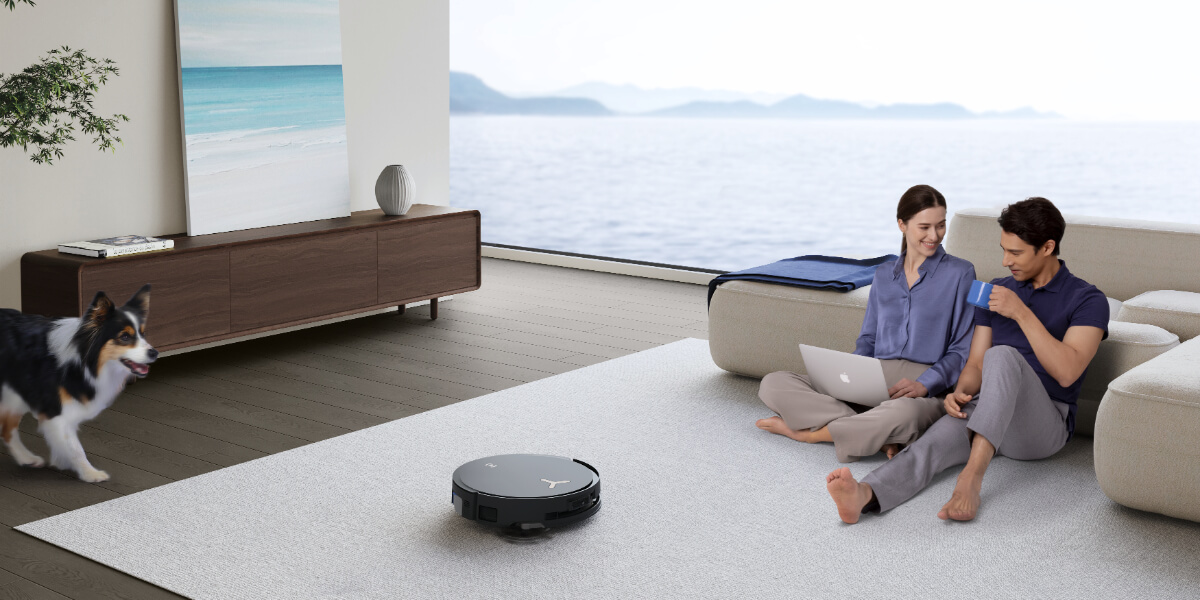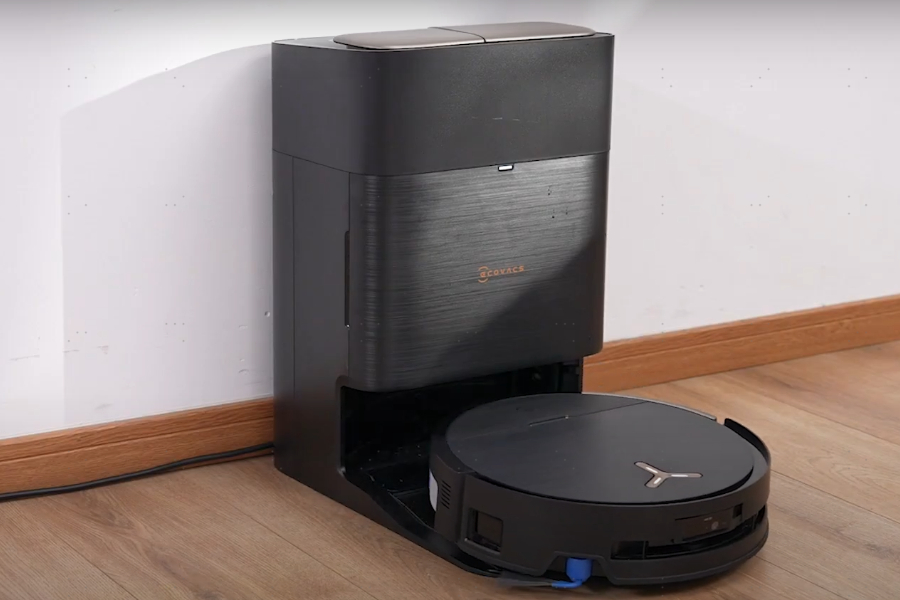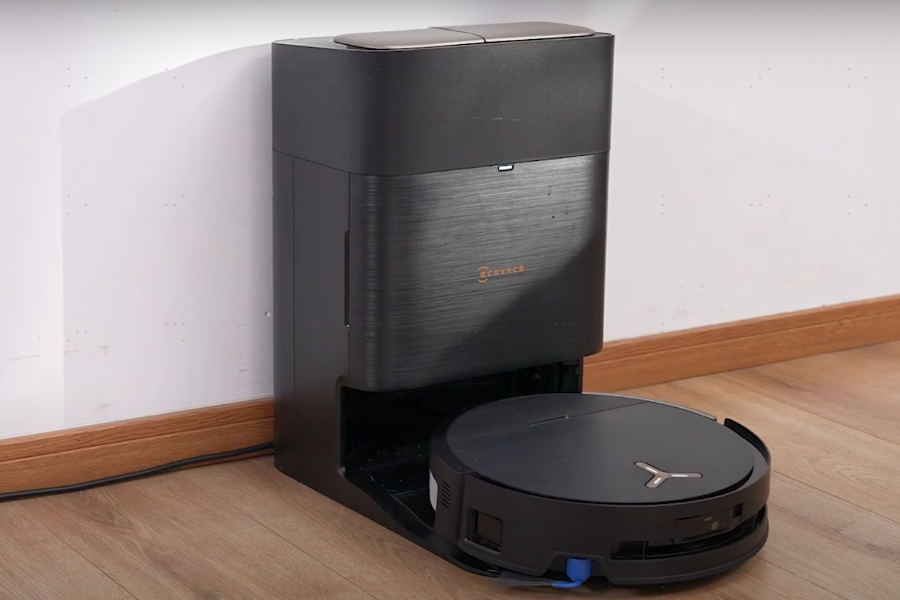What To Do When My Robot Vacuum Can't Find Its Base?
2024-04-05

Navigating back to its "Home" sweet home, or rather, the docking station, is one of the common features of today's robot vacuums. This home base isn't just a charging station; for some models, it's where they empty and clean before another cleaning session. Ideally, they utilize smart mapping technology to find their way back to their chargers and dock, even if you live in a big house in Texas, in California, or a smaller space in New York. Yet, when a smart vacuum gets lost, it becomes a real issue as the robot can wander aimlessly or eventually stop when its battery dies . It's frustrating, but don’t worry—we'll explain the potential reasons and what you can do about it.
How Do Robot Vacuums Find Their Base?
Robot vacuum cleaners use various technologies to find their base, including infrared signals, bump and cliff sensors, laser navigation, cameras, memory mapping, and Wi-Fi connectivity. These technologies allow them to operate autonomously, handling tasks such as cleaning, emptying their dustbin, charging, and then resuming cleaning.
Sensors
Sensors act like a mini-GPS system for your robotic vacuum cleaners. After their chore or when energy wanes, they follow infrared signals to head home . En route, bump sensors and cliff sensors are constantly on the lookout, ensuring they avoid objects and obstacles, as well as dramatic falls. Cliff sensors detect drops using infrared signals, changing the vacuum's path if no signal returns. Bumper sensorshelp them dodge furniture and walls, allowing your vacuum cleans efficiently without any unwanted damage.
Laser Navigation
Modern automatic vacuums, equipped with sophisticated laser navigation systems such as LiDAR, use an invisible laser to map out your home. This laser moves around, gathering data on the room's size and any obstacles, then charts a cleaning path in an organized pattern. This allows for efficient and accurate navigation, ensuring that not a single obstacle diverts it when it's time to return to the docking station.
Camera
Robot floor cleaner with camera takes pictures of landmarksin your home to help it navigate and remember the route back to its docking station. This method works well in well-lit environments, but traditionally, it's struggled in dark rooms . To overcome this, some newer models now include built-in lights, so they can continue to see and move effectively, even in the absence of natural or artificial light, ensuring they always find their way home.
Memory Mapping
Memory mapping, also known as gyroscope or accelerometer mapping, is a technology some auto vacuums use to figure out their position and find their way back to the home. These vacuumscalculate the distance and direction of objectsin the house to navigate. It’s worth noting that this cost-effective method might not offer the precise mapping and navigation capabilities of LiDAR or camera-based systems.
Wi-Fi Connectivity
Wi-Fi plays a crucial role in helping auto vacuums returns to their charging stations. Without a stable Wi-Fi connection, these smart cleaners can't receive and respond to orders to return home . If your robotic vacuum cleaner struggles to find its way back, it could be a Wi-Fi connection issue. Sometimes, disconnecting and reconnecting the Wi-Fi can revive its ability to find its way back to the dock.
Our DEEBOTs are equipped with different cutting-edge technologies to travel back to their chargers. For instance, DEEBOT X9 PRO OMNI use AIVI 3D 3.0 to locate the base, and then efficiently roam back with Dual-laser LiDAR.
Why My Robot Vacuum Can’t Find Its Base?

A robot floor cleaner might not be able to return to its docking station if it encounters an unexpected obstacle, is manually moved, or starts cleaning from an unusual location.
Technical glitches, such as a drained battery, a lost Wi-Fi connection, or physical damage, can also be the reason your automatic vacuum can’t find its base. Without proper troubleshooting, these situations can make it difficult for the cleaning robot to find its way back to its home, causing it to roam aimlessly and eventually shut down before it can dock.
What to Do When Your Vacuum Can't Find Its Base?
If your smart vacuum can't find its way back to its base, there are several straightforward fixes you can try yourself before reaching out to the manufacturer for further assistance. Here’s what to do for common issues:
- Obstacles & Clutters: Before starting its cleaning cycle, take a moment to observe and clear away any potential barriers. Besides, check if the vacuum's maximum crossing height is adjusted appropriately, enabling it to easily goes over higher thresholds, such as room dividers.
- Low Battery: A lack of power prevents the base from transmitting the necessary infrared signal for the vacuum to find its way back. Inspect the charger and cable for any damage, and try plugging it into other outlets.
- Incorrect Placement Of Home Base: Home charger should be placed against a wall with at least 2 inches of clearance on either side and 32 inches in front, away from stairs and on a level surface to allow clear infrared signal reading by the automatic vacuum. Avoid moving the dock randomly as the smart device will have to recreate the map to locate it.
- Incorrect Placement Of The Robot Vacuum: Starting the cleaning cycle from a location other than the home may confuse the vacuum. Always start from the base; otherwise, it may return to the starting point instead of the dock.
- Dirty Sensors: Dusty sensors can make the smart vacuum goes “blind”. Clean the robot floor cleaner and the charging station with a soft, dry cloth, focusing on those at the front that transmit infrared signals.
- Lighting: Allow adequate lighting for robotic vacuum cleaners equipped with camera-based mapping to move smoothly. Avoid placing the docking station in direct sunlight, too, as it can interfere with the infrared signal.
- Technical issues: A drained battery or physical damage can cause the vacuum to get lost. If you notice something is stuck, power it off and clean the parts thoroughly. If this doesn't resolve the issue, repairs might be necessary.
- Wi-Fi issues: A stable Wi-Fi connection is essential for your automatic vacuum to follow return commands. First check your Wi-Fi network, then try disconnecting and reconnecting the vacuum to refresh its connection.
Can ECOVACS' DEEBOT Find Their Base?

Yes, we employ a mix of smart technologies to ensure DEEBOT robot vacuums can always return to chargers, since all our robot vacuums come with docks . Take DEEBOT X9 PRO OMNI as an example. Starting with TrueMapping technology, it helps them map out the environment, ensuring they know exactly where they are. The upgraded RGBD sensor, coupled with AIVI 3D 3.0, helps in recognizing the charging station. On their return, Dual Laser LiDAR and AINA Mode enhance their response to changes at home, allowing smooth navigation.
FAQ
Can robot vacuums return to their base from any room?
Yes, robot floor cleaners can return to their base from any room, provided they have mapped the environment accurately and there are no physical barriers blocking their path back to the dock.
How do robot vacuums detect their charging base?
Auto vacuums detect their charging base using sensors and technologies like infrared signals, LiDAR, or camera-based navigation to recognize the dock's location and move back to it for charging.
What happens if a robot vacuum loses its way back to the base?
If a robotic vacuum cleaner loses its way back to the base, it may wander until its battery runs low, then stop and signal for help, or keep attempting to find its dock.
Related Products









